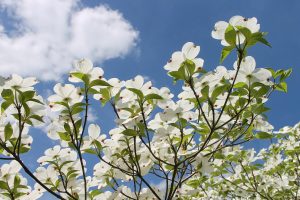In this guide, we will explore a diverse selection of rock garden plants that thrive in Zone 6, offering unique charm, color, and texture to your outdoor space.
Bugleweed (Ajuga reptans and A. spp.)
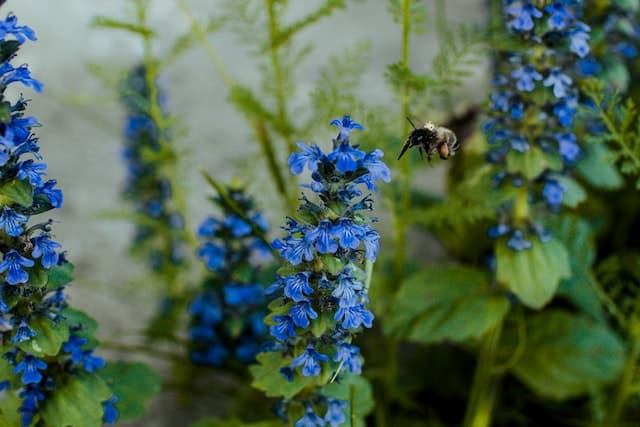
Ajuga, commonly known as bugleweed, is a perfect addition to any rock garden, particularly in Zone 6. This perennial plant is known for its vibrant foliage and eye-catching flowers. The leaves are often rich in color; some varieties showcase deep purple or variegated green and gold. Each spring, bugleweed bursts forth with captivating blue-violet flower spikes that attract bees and other pollinators.
What makes Ajuga particularly appealing is its adaptability. It can thrive in a range of soil types, although it prefers well-drained soil, making it suitable for rocky locations. Additionally, it is a ground cover, which means it helps suppress weeds while providing a lush green carpet between your rocks.
Basket of Gold (Aurinia saxatilis)

The bright yellow blossoms of Aurinia saxatilis, or basket of gold, can turn any rock garden into a golden vista in the spring. This perennial plant blooms profusely in April and May, producing clusters of small, cheerful flowers that rise above its gray-green foliage. What sets basket of gold apart is its ability to thrive in poor, rocky soil and resist drought once established.
Aside from its striking color, basket of gold spreads easily, making it a wonderful option for a ground cover in sunny, well-drained areas of your garden. The plant’s low-growing nature allows it to fit perfectly in the crevices among rocks, enhancing the beauty of your landscape while providing a sturdy foundation for other plants.
Blue Fescue (Festuca glauca)

If you want to incorporate a touch of blue into your rock garden, look no further than Festuca glauca, commonly known as blue fescue. This ornamental grass is admired for its fine, needle-like foliage, which turns a stunning blue-gray color. In addition to its striking appearance, blue fescue is drought-tolerant and thrives in well-drained soils.
Blue fescue adds a lovely texture to your garden, contrasting beautifully with other flowering plants. It grows in clumps, making it ideal for weaving between rocks or around larger plants. And when the bloom spikes emerge in summer, they add vertical interest that draws the eye and softens the hard lines of your rock formations.
Blue Star Creeper (Isotoma fluviatilis syn. Laurentia fluviatilis)
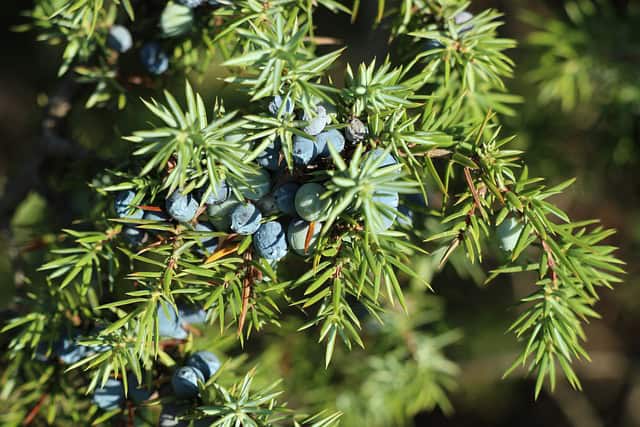
The delicate beauty of Blue Star Creeper is a must-have for any rock garden in Zone 6. With its low-growing habit and vibrant green foliage, this plant creates a lush mat that thrives in well-drained soil and full sun to part shade. The standout feature of Blue Star Creeper is its star-shaped blue flowers that appear in spring, providing a stunning contrast against its foliage.
This plant is perfect for filling in small gaps in your rock garden or spilling over the edges of your rock formations. Its resilience and ability to tolerate foot traffic make it an excellent choice for pathways or other high-traffic areas in your landscape.
Candytuft (Iberis sempervirens)
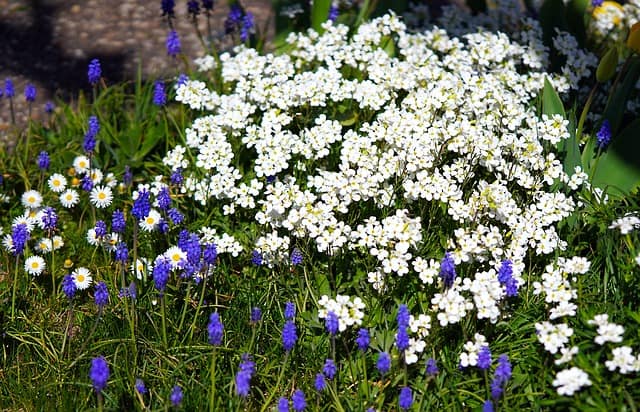
Iberis sempervirens, or candytuft, is a classic rock garden staple that brings a fragrant touch to your outdoor sanctuary. This evergreen perennial features dense clusters of white or pink flowers that bloom in early spring. The compact growth habit of candytuft makes it ideal for planting among rocks, where it can spill over and create a cascading effect.
Candytuft thrives in well-drained soil and needs full sun to achieve its best performance. As it blooms, the delightful scent fills the air, inviting delightful pollinators into your garden. In addition, its low maintenance requirements and adaptability to droughty conditions make it a practical choice for both novice and experienced gardeners alike.
Campanula (Campanula spp.)
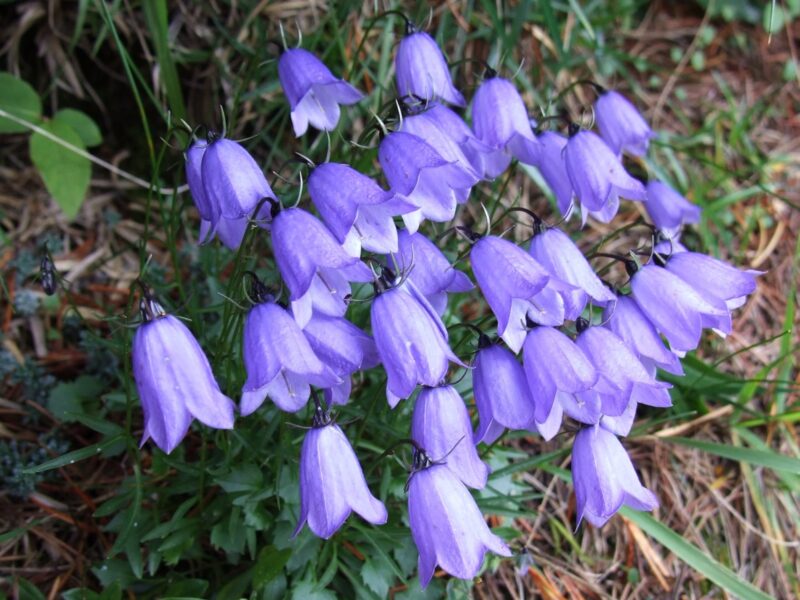
Campanulas are a diverse genus with many species and cultivars that can offer distinctive blooms to your rock garden. From the bell-shaped flowers that droop gracefully to the more upright varieties, Campanula offers a charming display of color that appeals to bees and butterflies alike. Whether you choose the creeping type, perfect for filling in gaps, or taller species that provide vertical interest, these plants thrive in well-drained, rocky soil.
Campanula can produce flowers in various shades, including blue, purple, and white, allowing you to create a vibrant tapestry of color in your garden. Their ability to adapt to different light levels—from full sun to partial shade—makes them versatile and significant contributors to your rock garden design.
Columbine (Aquilegia spp.)

Aquilegia, better known as columbine, is another star of the rock garden in Zone 6. With its unique and distinctive flower shape resembling a whimsical lantern, each columbine blooms in a medley of colors, including shades of blue, purple, pink, and yellow. This perennial not only looks beautiful but also attracts hummingbirds and butterflies, enhancing the lively atmosphere of your garden.
Columbine prefers partial shade, especially in hotter climates, making it suitable for the cooler parts of your rock garden. Their tall stalks create height among the stones and allow for creative layering with other plants to create a rich, textured landscape.
Coral Bells (Heuchera spp.)
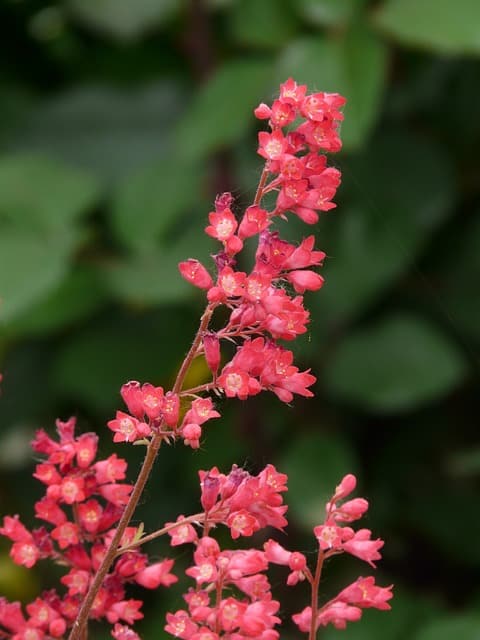
Heuchera, or coral bells, is a fantastic option for adding vibrant foliage and delicate blooms to your rock garden. With a range of colorful leaves available, from deep burgundy to bright lime green, coral bells can provide an intriguing visual contrast throughout the seasons. The petite flower spikes that rise from the foliage in the late spring to early summer add an additional layer of beauty.
These plants prefer well-drained soil and can thrive in diverse conditions, including partial shade. Coral bells are great for draping over rocks or filling in spaces around larger anchor plants, seamlessly blending into the natural aesthetic of your garden.
Cotoneaster (Cotoneaster spp.)
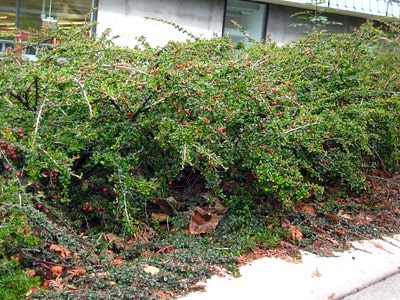
The Cotoneaster genus includes a variety of low-growing shrubs that adapt well to rocky environments. These plants are particularly valued for their dense growth and vibrant red berries that persist through winter, providing seasonal interest. Cotoneaster tolerates poor soil conditions and drought once established, making it an excellent candidate for rocky landscapes.
These hardy shrubs can be used as ground cover or as low hedges, fitting snugly among rocks to create a natural look. The texture of cotoneaster can soften the harsh edges of stones while providing shelter for tiny wildlife in your garden.
Dianthus (Dianthus spp.)
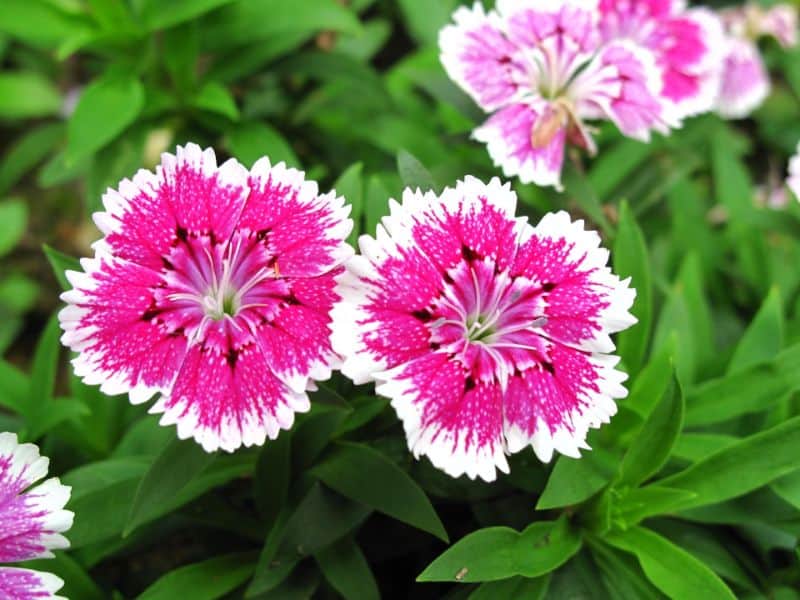
Dianthus, commonly known as pinks or carnations, features stunning flowers that add vibrant splashes of color to your rocky terrain. In a variety of colors, including bright pink, white, and red, these perennial plants are characterized by their frilled petals and delightful fragrance that beckons pollinators. They thrive in well-drained soil and full sun, making them excellent for rock gardens.
Dianthus can be used to create an aromatic display amidst the rocks, and with some species growing only a few inches tall, they can fill in spaces beautifully without blocking taller plants. Their long blooming period from late spring to early summer ensures your rock garden remains colorful and enticing.
Hen and Chicks (Sempervivum spp.)
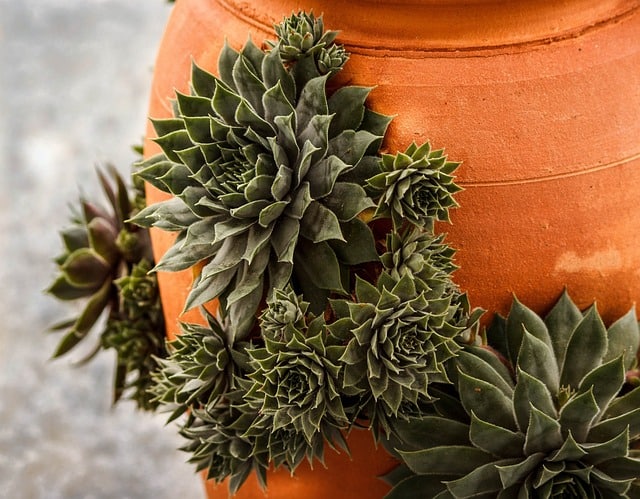
Anyone looking for resilience in their rock garden should consider Sempervivum, commonly known as hen and chicks. These succulent plants excel in well-drained soils, making them perfect for dry, rocky environments. With their rosettes of fleshy leaves that store water, hen and chicks thrive under harsh conditions and require minimal care.
The unique appearance of these plants, which can range in color from deep green to shades of purple, creates stunning focal points among your rocks. In late spring and summer, they produce tall flower stalks topped with star-like blooms, adding yet another layer of interest to your landscape.
Ice Plant (Delosperma spp.)
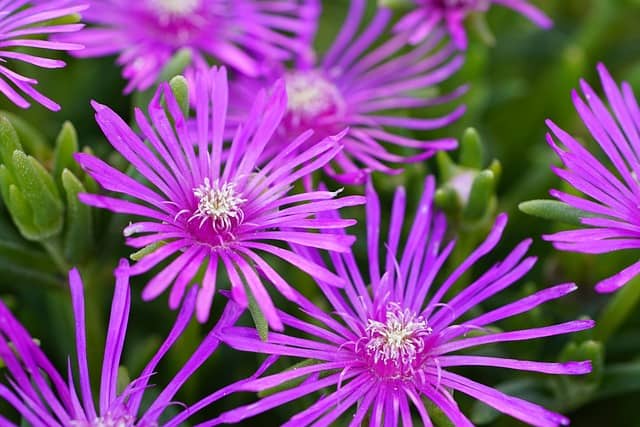
For a bright and colorful addition to your rock garden, consider Ice Plant. This succulent ground cover boasts vibrant, daisy-like flowers in shades of pink, yellow, and purple, blooming profusely in late spring and summer. Ice plants thrive in well-drained soil and are extremely drought-tolerant, making them perfect for arid rock gardens.
The fleshy, succulent leaves of Ice Plant can hold moisture, allowing them to survive in poorer soils and harsh conditions. Their sprawling habit makes them a lovely option for cascading over stones, ensuring your rock garden remains lively and captivating.
Irish Moss (Sagina subulata)
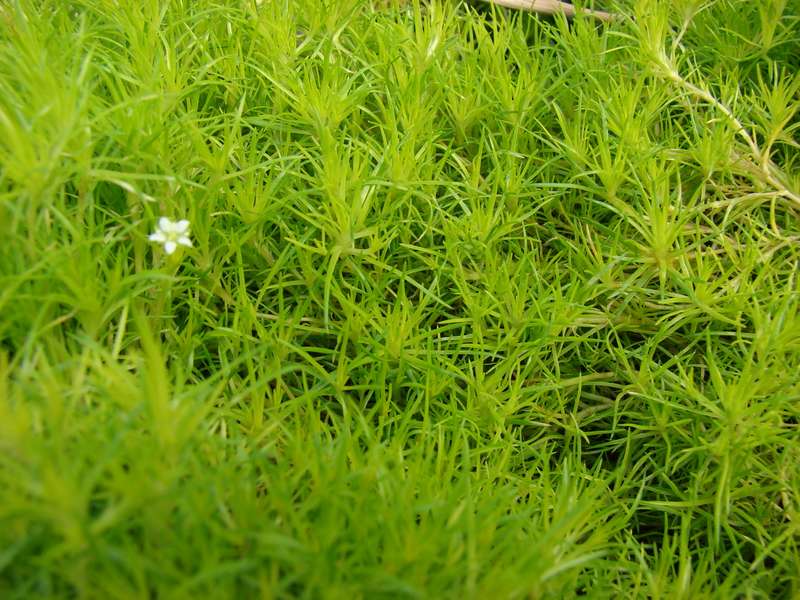
If you’re looking for a lush green carpet to fill the spaces in your rock garden, Irish moss could be the answer. This creeping perennial creates a dense mat of small, vivid green leaves that feel soft underfoot, making it ideal for walkways and the cracks between stones. It’s not only visually appealing but also tolerant of foot traffic.
Irish moss prefers cool, moist conditions and thrives in partial shade, making it well-suited for rock gardens with sheltered areas. With time, it will naturalize beautifully, adding a vibrant and lively touch to your rocky landscape.
Juniper (Juniperus spp.)

Juniper is a versatile evergreen shrub that provides year-round structure and beauty to rock gardens. With numerous species available, they vary from low-growing ground covers to taller varieties. Their needle-like or scale-like leaves maintain their color throughout the seasons, adding essential greenery from winter through summer.
Junipers are incredibly hardy and drought-tolerant, thriving in poor, rocky soil, making them perfect for Zone 6. Their dense growth can help to soften the lines of your rock formations while providing shelter for small animals and an ideal backdrop for colorful flowers.
Lamb’s Ear (Stachys byzantina)
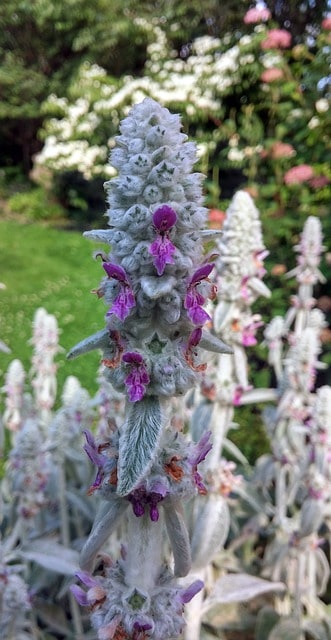
The soft, fuzzy leaves of lamb’s ear can tempt anyone to reach out and touch them, creating a unique sensory experience in your rock garden. This perennial produces silver-gray leaves that contrast beautifully with surrounding plants, and in late spring, it sends up spikes of purple flowers that attract pollinators.
Lamb’s ear prefers well-drained soil and sunny locations, which helps it thrive in rocky environments. Its ground-hugging habit allows it to fill gaps while providing a unique texture that adds interest to your garden design.
Lavender (Lavandula spp.)
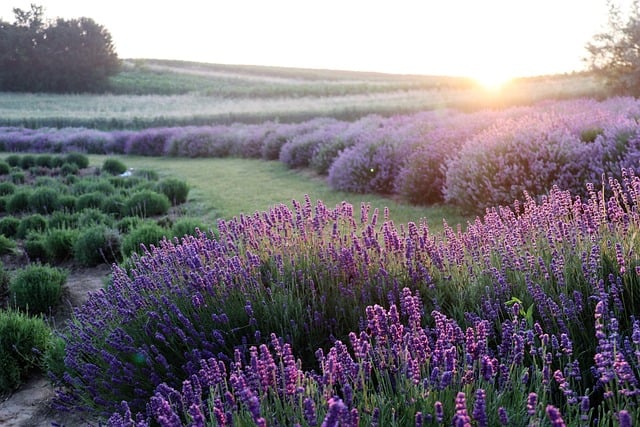
Renowned for both its striking appearance and calming fragrance, lavender is a remarkable candidate for rock gardens in Zone 6. With its silvery-grey foliage and stunning purple flowers, lavender not only brings beauty to your outdoor space but also attracts a host of beneficial insects, including bees and butterflies.
Lavender thrives in well-drained, sandy soils and prefers full sun, making it well-suited for rocky environments. Plus, its drought-tolerant nature adds to its appeal, ensuring it flourishes even in dry spells. Incorporating lavender into your rock garden serves both aesthetic and practical purposes.
Mugo Pine (Pinus mugo)
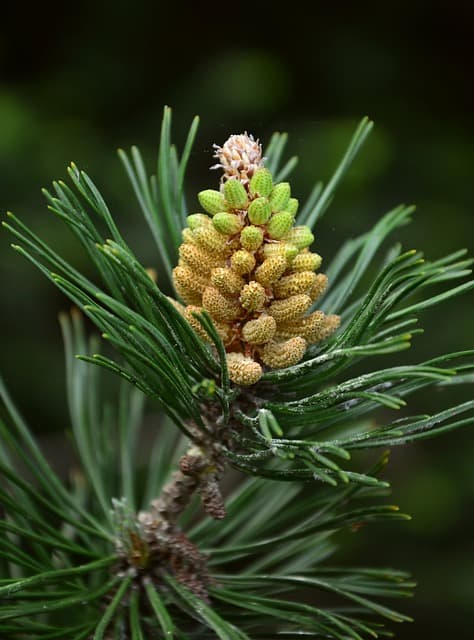
Mugo pine is a versatile and adaptable evergreen shrub that brings structure to your rock garden. With its densely packed needle-like leaves and interesting shape, this low-growing conifer is perfect for creating a rich backdrop for smaller perennials. Mugo pine is also drought-tolerant, thriving in rocky, well-drained soils while providing excellent winter interest.
The plant provides aesthetic appeal all year round, offering a contrasting structure that enhances other plants in the rock garden. With species available in a range of sizes, you can easily choose one that fits seamlessly into your design.
Phlox (Phlox spp.)
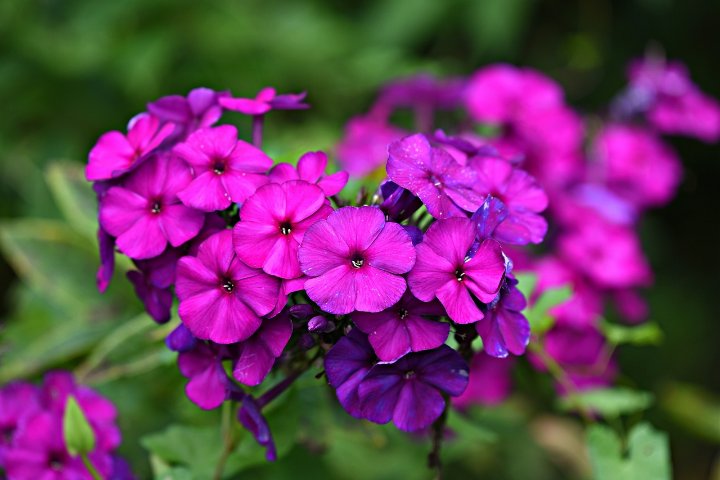
Phlox is a genus that offers numerous colorful choices for rock gardens, particularly the creeping varieties. Low-growing phlox produces vivid clusters of flowers in shades of pink, red, purple, and white in the spring, creating a vibrant display that can cascade beautifully over rocks.
Creeping phlox thrives in well-drained soil and prefers full sun, making it a great choice for sunny locations in your rock garden. They are also excellent for attracting pollinators, adding life and movement to your outdoor space.
Rock Cress (Aubrieta deltoidea)
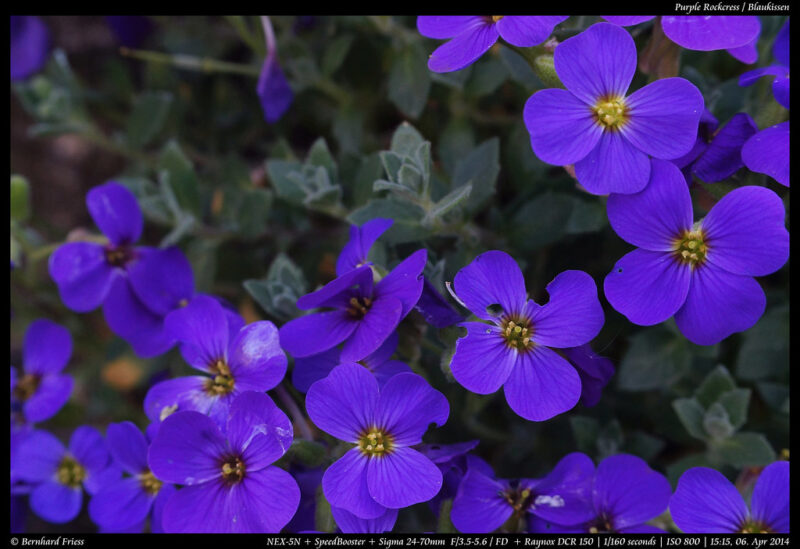
Rock cress is the quintessential rock garden plant, known for its ground-hugging habit and beautiful display of bright purple flowers. This perennial is very tolerant of rocky soils and is ideal for abundant blooms in the spring. Rock cress can spill over stone edges, creating a cascading effect that highlights the beautiful contours of your garden.
In addition to its beauty, rock cress is resilient and drought-tolerant, allowing it to thrive in challenging growing conditions. This makes it an enduring choice for gardeners looking to enhance their rock landscape with lively color and texture.
Sea Thrift (Armeria maritima)
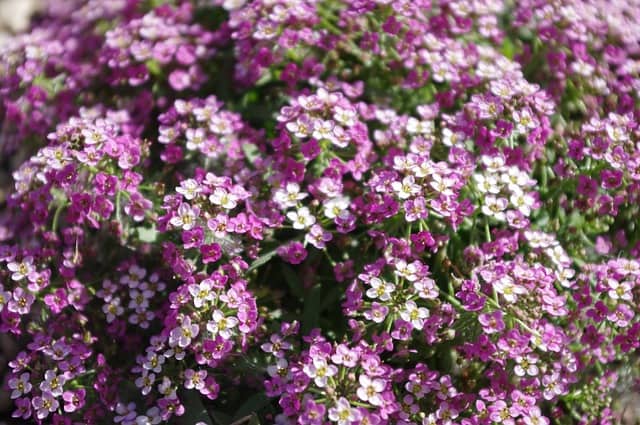
Sea thrift is a charming and resilient perennial perfect for coastal gardens and rocky landscapes. With tufts of grassy foliage and clusters of round pink or white flowers on tall stems, sea thrift offers a delightful display that will brighten up your rock garden.
This hardy plant thrives in well-drained soil and tolerates poor conditions, making it suitable for sandy or rocky terrains. Sea thrift also has a long blooming period, providing beauty from late spring through summer, and its unique look adds interest at various levels throughout your rock garden.
Sedum (Sedum spp.)

Sedums are perhaps the star of the show when it comes to rock gardens. Known for their succulent leaf structures and vibrant summer blooms, sedums are incredibly hardy and thrive in well-drained soil, perfectly adapting to rocky terrains. There are many different varieties of sedum, ranging from low-growing ground covers to taller, upright types that provide visual diversity.
Sedums create an inviting tapestry of color and texture, especially in the hot, sunny sections of your rock garden. Their low maintenance and drought-resistant characteristics make them a favorite among gardeners seeking both beauty and resilience.
Snow in Summer (Cerastium tomentosum)
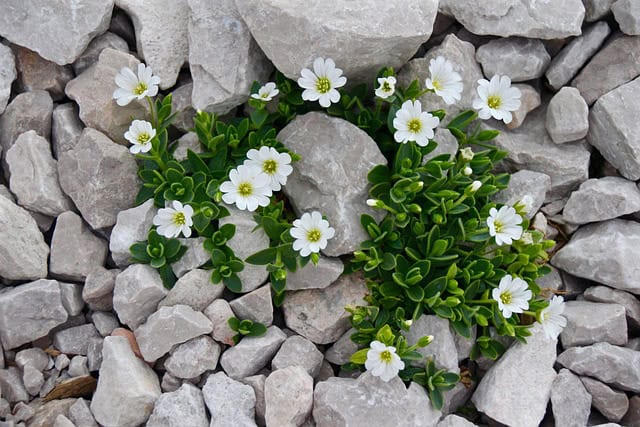
Snow in summer is a charming perennial ground cover perfect for adding a touch of brightness to your rock garden. With its lush, silvery foliage and white flowers that bloom in late spring, this plant creates a stunning contrast to rocky textures and darker colors.
This hardy plant thrives in well-drained soil and sunny locations, making it well-suited for rocky landscapes. Its ability to spread quickly allows for excellent coverage, transforming any bare ground into a vibrant, flowering display.
Soapwort (Saponaria ocymoides)
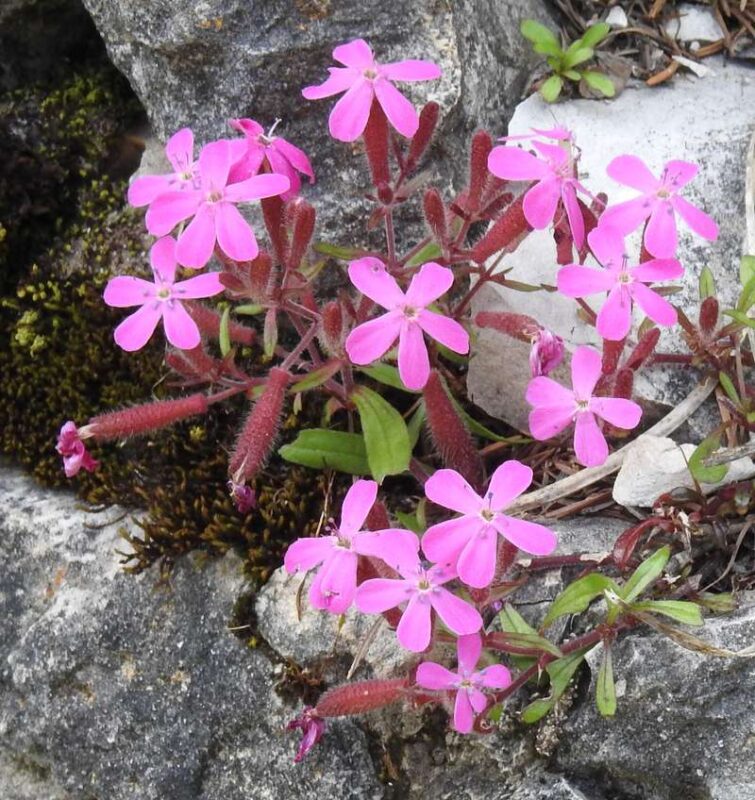
Soapwort is an enchanting perennial that thrives in rocky gardens, boasting delightful pink or white blooms that provide a soft touch to your landscape. The foliage is low-growing and resilient, making it a perfect ground cover for rocky crevices.
In addition to its beauty, soapwort is quite hardy and adapts well to different soil conditions, although it prefers well-drained terrain. It can also tolerate moderate drought, ensuring it remains a striking feature throughout the growing season.
Creeping Thyme (Thymus spp.)
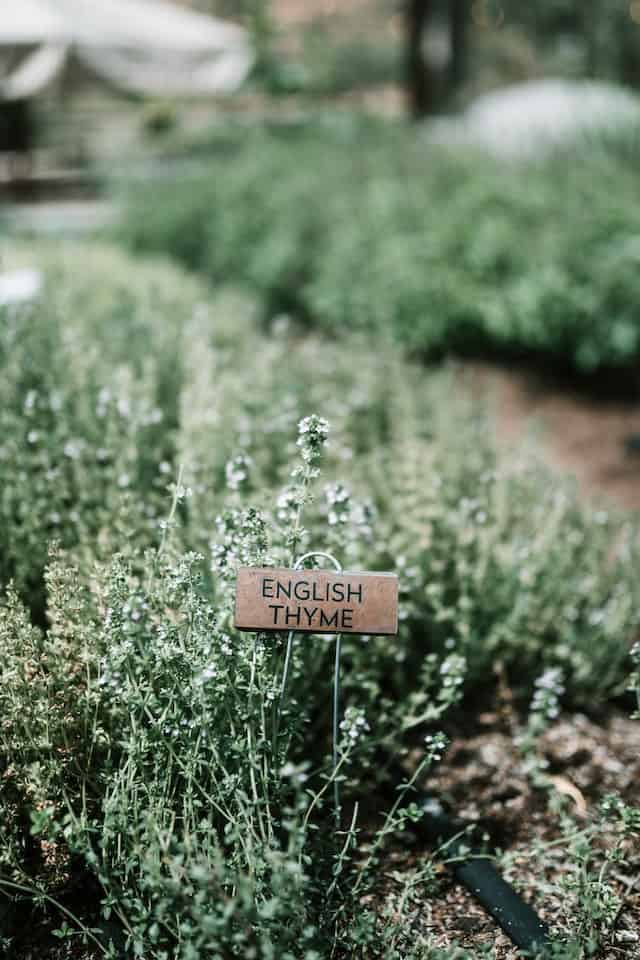
Creeping thyme is a beloved choice for rock gardens, as it offers a lovely low-growing habit that thrives in sunny, well-drained soil. With its fragrant leaves and cheerful pink or purple flowers in the summer, creeping thyme adds both sensory pleasure and visual charm to your landscape.
The dense mat formed by creeping thyme provides excellent ground coverage, suppressing weeds and providing a soft carpet that can endure foot traffic. Its drought-resistant nature ensures it flourishes in rocky gardens, making it an excellent choice for any Zone 6 rock garden.





